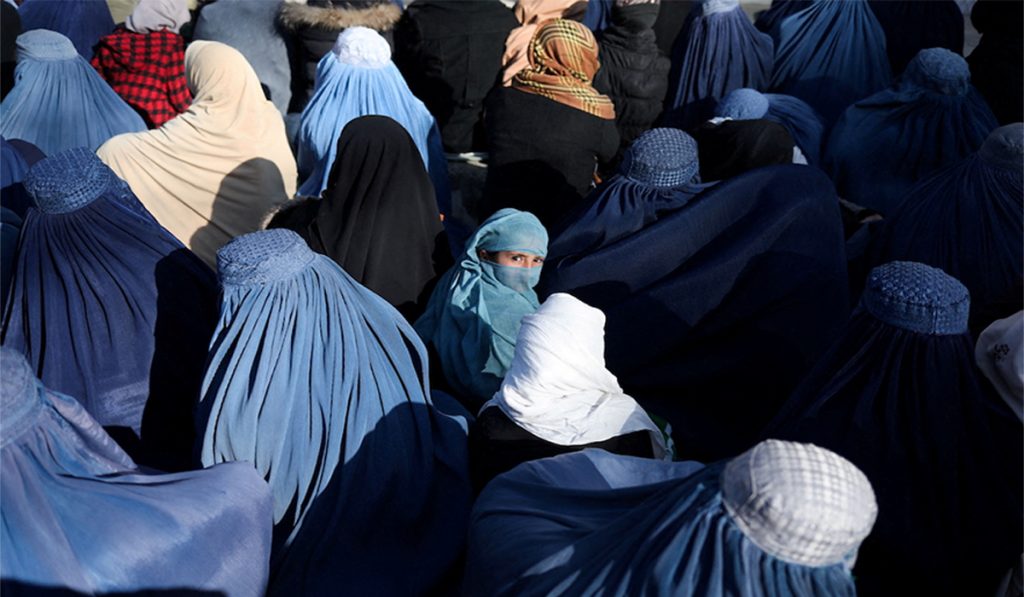Nearly four years after the Taliban’s return to power, Afghan women continue to face one of the world’s most severe gender crises, according to a landmark report released by UN Women. The 2024 Afghanistan Gender Index, unveiled on June 17, 2025, presents a sobering snapshot of life for women and girls under the Taliban regime, highlighting an environment marked by exclusion, limited rights, and vanishing opportunities.
The report — the first of its scale since the regime change in August 2021 — paints a grim portrait of life for half the country’s population. According to the data, Afghan women currently realize just 17.3 percent of their potential to access rights and opportunities. By comparison, the global average is 60.7 percent, making Afghanistan one of the most unequal societies in terms of gender. Out of 114 countries ranked in the Index, Afghanistan came second to last, ahead only of Yemen. “This report is not just a statistical exercise — it’s a mirror to the reality faced by Afghan women and girls every day,” said UN Women Executive Director Sima Bahous.
“Despite the restrictions, Afghan women continue to show resilience and leadership within their communities. They deserve global solidarity and action.” Developed with support from the European Union, the Index is based on surveys conducted with over 2,100 people across eight provinces in Afghanistan. Its findings confirm that the Taliban’s policies have drastically rolled back the rights and visibility of women in public life. Since August 2021, key constitutional protections have been dismantled, the Ministry of Women’s Affairs has been dissolved, and women have been banned from positions in both the Cabinet and local governance structures. The national parliament no longer exists, and no woman currently holds a recognized political office. The report also highlights the extent to which women are locked out of education and employment.
Among young women aged 18 to 29, a staggering 78 percent are not in education, employment, or any form of training — a figure nearly four times higher than that of young men in the same age group. Secondary school completion for girls is projected to decline sharply following the Taliban’s series of education bans. These include a blanket prohibition on schooling for girls beyond grade six and a more recent decree, issued in December 2024, that bars women from studying medical sciences. Economic participation among women has also dropped drastically. According to the report, just 24.2 percent of Afghan women are currently in the labor force, compared to 88.9 percent of men.
Those who are employed are largely confined to informal, low-paying roles without job security or benefits. Financial independence remains out of reach for most: only 6.8 percent of women have access to a bank account or mobile money services, as opposed to 20.1 percent of Afghan men. Yet, amid the worsening e c o n o m i c c l i m a t e , the report notes an unexpected development — more Afghan women are actively seeking work. The number of unemployed women looking for jobs has quadrupled since the Taliban’s return, and the number of employed women has doubled. This surge is being driven by necessity, not policy, as families struggle to survive under Afghanistan’s deepening economic collapse. W h i l e t h e r e p o r t acknowledges gaps in available data — owing to severe restrictions on research under Taliban rule — it still sheds light on the continued threat of gender based violence.
The most recent reliable figures, from 2018, suggest that nearly 35 percent of Afghan women had experienced intimate partner violence — nearly three times the global average. Since the Taliban took over, legal support services and protective mechanisms for women have all but disappeared, raising fears that abuse may be going unreported and unchecked. UN Women notes that five indicators could not be updated due to safety risks and data collection limitations: healthy life expectancy, access to modern contraception, adolescent birth rates, the proportion of women in managerial positions, and the updated prevalence of domestic violence. Despite these constraints, the Gender Index serves as an essential benchmark for policymakers and international organizations seeking to understand and address the plight of Afghan women. It encapsulates not only the tangible outcomes of Taliban policies but also the broader societal shifts that have led to an erosion of women’s status in Afghan society.
“Afghanistan’s greatest untapped resource is its women and girls,” said Bahous. “By investing in their potential, the country could unlock immense social and economic gains. But that future remains out of reach unless their rights are recognized and restored.” UN Women has pledged to continue its efforts on the ground in Afghanistan, working with local partners to ensure that women’s voices and needs are not sidelined in the broader humanitarian response.
It has also called on the international community to maintain its focus on Afghan women and girls, ensuring they remain central to any discussion about the country’s future. In the shadow of war, economic hardship, and political repression, Afghan women are facing one of the most challenging periods in their modern history. Yet, even in these conditions, their determination to remain visible — to study, to work, to be heard — endures. This report makes it clear: they are not giving up. And neither should the world.
